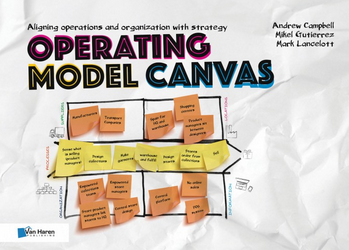Home / Resources
Resources
Discover a Wealth of BPM Knowledge and Expertise at BPMInstitute.org!

The Business Architect’s Journey: Top-Three Qualities for Success
Picture this scenario: You are brimming with excitement as you start your engagement with a brand-new client – a client who had persuasively spoken to you their company’s capability-driven approach to architecture and its commitment to building a Business Architecture competency. A client who, in preliminary discussions, had emphasized their urgent need for seasoned experts (such as yourself) to guide the more junior Business Architects. The importance of personal leadership and of having the requisite fortitude to stand by your recommendations had been emphasized. (Your certainly don’t lack either of these traits). The existence of some challenges might have been mentioned. (But what reality is that where there are no challenges…?)

The Leadership Principle: Executive Impact on Agile
It’s not a secret anymore. I’m not sure it ever was a secret.
There are many differentiators that can ultimately impact whether or not an organization succeeds or fails in their adoptiontransformation with Agile. But, none are as impactful as that of leadership influence. We’re not just talking about the “I don’t care what you call yourself as long as I get what I want faster” apathetic leadership. We’re talking about something much more meaningful and impactful.

DMN – To FEEL or Not to FEEL
As the number and maturity of platforms supporting the Decision Model and Notation (DMN) standard continues to grow, it is time to take a look at the third Conformance Level defined in DMN. The Friendly Enough Expression Language (FEEL) is the language used by DMN to formalize decision logic in applicable points of a decision model. Conformance Level 3 supplements the notation and modeling in Conformance Level 1 and the decision table support defined in S-FEEL (simple Friendly Enough Expression Language) of Level 2 with the full FEEL expression language. FEEL provides powerful capabilities to satisfy the needs of DMN:
- Built-in types, functions and operators
- Enables a formal expression that can define every decision in a model
- Formal expressions that may be encapsulated as functions • Supports abstraction, composition, and scalability
With this capability in mind, let’s remind ourselves of the stated goals of DMN:

Lessons from the Field: The Adaptable Business Architect
The other day my daughter said, “Dad, I really don’t understand what your job is.” Many days I am not so sure either. I thought about saying, “I help to align strategic objectives and tactical demands,” but knew that wouldn’t lead us anywhere. Usually I answer this question by saying I go to meetings and read e-mails for a living, but that joke is getting old. This time I told her that I will explain it to her when she grows up. Part of the reason this has always been a hard question to answer is that my role seems to shift month to month and initiative to initiative. This is also part of the reason I love what I do. I believe that adaptability is a key trait exhibited by good architects, but saying you are adaptable and actually being adaptable are two different things. So what are some of the key ways to demonstrate your adaptability? Don’t get into turf wars, bring the right temperament, and think big, or rather act big.
Avoid Turf Wars

4 Critical Factors in Digital Transformation Success
The term ‘Digital Transformation’ has taken its place in today’s business vocabulary. It’s on the lips of virtually every IT vendor, most management consultants and an increasing number of executives.

Disguising Analysis: Making the Medicine Go Down
Ask process improvement experts (which I have done over the years in teaching and consulting with such people) what is the hardest part of doing a process improvement project and they tend to say analysis. And in fact, it’s not just among process practitioners that you will hear people say that analysis is their most challenging activity: training program developers, organizational effectiveness types, change management coaches, etc., also tend to cite analysis as the toughest aspect of their work.

Staying Out of the Weeds with BPM Process Modeling
Do you experience these challenges in trying to create a current state process model?
- The team gets mired in process problem details
- People have ideas for improvements but you are not really ready for solutions yet
- Some groups do the process one way and others do it a different way.
- Some people think it’s a big problem but you don’t know for sure.
Here are two techniques that will really help you out and make life much easier.
- Start with a single process instance
- Keep the I-4 Lists as you document
Start with a Single Process Instance
Begin by selecting a single process instance that the team will follow. Capturing one instance of a real completed process makes it easy to complete the model in 90 minutes or less, and it won’t have the spaghetti look of a process model showing all the exceptions.
For optimum results, pick an instance to start with…

Business Capability Redefined According to SMACT
Innovate or die. That is the mantra of successful organizations that compete in a fast-transforming digital world. Those who harness social media, mobile, analytics, cloud computing, and Internet of things (SMACT) to digitize the business win in the marketplace. Those who don’t, lose. It is a wild, wild digital world out there.
Business architects embedded in successful organizations need to innovate as well or lose relevance. The world where business architecture matters has changed. Old paradigms give way to the new. One area that needs rethinking is how business architects define a business capability.

How Ricoh is using BPM to Drive Continuous Improvement
Join this webinar to learn how global technology leader Ricoh Australia has successfully introduced a standardized approach to process mapping. Declan O’Reilly, Business Excellence Manager at Ricoh will provide a first-hand account of their process mapping journey, sharing lessons learned and some of the immediate benefits the organization has realized including:
- More effective process creation, capture and communication
- Empowering teams across the organization to deliver a consistent customer experience
- Simplifying external and financial audit processes
- Ensuring adherence to quality and compliance requirements critical to their carbon neutral status
- Better management and communication of client SLAs

Meet the Author: Andrew Campbell, Operating Model Canvas
The journey from strategy to operating success depends on creating an organization that can deliver the chosen strategy. This book, explaining the Operating Model Canvas, shows you how to do this. It teaches you how to define the main work processes, choose an organization structure, develop a high-level blueprint of the IT systems, decide where to locate and how to lay out floor plans, set up relationships with suppliers and design a management system and scorecard with which to run the new organization. The Operating Model Canvas helps you to create a target operating model aligned to your strategy.
In this webcast, I will..

Two Tools that Help Link Processes with Strategy
When doing process work, attention is rightly drawn to the detail: the 43 steps in the process, the tests for waste, the flow bottlenecks, the measures of variation and so on. How, therefore, does a process expert keep connected to the strategy? How does he or she avoid optimising a process only to find that there are unforeseen negative consequences for the larger organisation?
The traditional answer to this question is “by focusing on the customer”. But, in my experience this is insufficient. First, it is the strategy that decides which customers to focus on and what value propositions to provide. So a good understanding of the strategy is necessary even to know whether the process work is focused on the right customer or the right service proposition.

How to Work With Challenging Product Owners – Part 1
The “Big Picture Thinker” and the “Aspiring Developer”
Every Agile team has experienced the frustration of working with a Product Owner who is very well intentioned but unable to provide the clear requirements that the team needs to build the most valuable business solution.
This is the first of two articles that address the specific challenges that you may be facing (or will most likely face) in your work with Product Owners. In this article, the focus is on two of the most common types of challenging Product Owners: The “Big Picture Thinker” and the “Aspiring Developer.”
The “Big Picture Thinker” Product Owner is an epic thinker, able to give the Agile team a high level description of their requirements but unable to describe (or to decide on) specific system behavior. Their inability to provide the team with adequate detail could be due to several factors, including their limited depth of knowledge and their fear of being responsible for decisions.

5 Easy Steps for Deploying Decisions
Decisioning systems need to fit in with existing processing systems.
There are five easy steps for deploying decisions using a combination of three core patterns – patterns suited for Legacy Systems, for Commercial Software Packages and for Modern Decision-Centric Systems respectively. This recipe allows for incremental changes that can be directed systematically for a powerful digital transformation.
Step 1- Pull Decisions out of Processes
Explicitly defined and managed decisions (a) simplify processes by abstracting the embedded business logic, and (b) allow knowledge to be injected into processes in the form of advanced analytical models and business rules.

Policies, Procedures, and Standards
At a recent engagement, I encountered several departments that asked me to help write their departmental policy on a particular subject. When I inquired as to the governance process for changing existing company policy, they looked at me blankly and said no, I didn’t understand – they needed a new policy, just for their department. After a little probing into the governance of their company policy (this enterprise had a single policy covering everything), and some further discussion, we ultimately settled on writing a new procedure and developing accompanying forms and workflows. I ended up helping this department rewrite their documents into the appropriate format, and working with them to better understand the hierarchy.
This got me to reflecting on how many times in my career I’ve heard confusion about policies, standards, procedures, and guidelines. Reasonable people will differ in their definitions, but here’s how I understand them to work best.

The Digital Business Architect: Lessons from the Field
The other day I was contemplating what business capabilities were enabled by connecting a toaster to the Internet of Things. (Yes, this really exists. And no, I didn’t come up with an answer.) Clearly technology is having an impact on every aspect of our lives and many business architects now find themselves in a strange place: after years of trying to distance themselves from IT and technology and be seen as part of the business, now the business is trying to embrace technology and understand what a digital transformation could mean to their business model. So what is a business architect to do? Adapt!
Paradigm Shift

5 Steps to Get Your BPM Project on Stable Footing Out of The Gate
Is your improvement project failing? Depending upon which study you reference, roughly two thirds of projects fail to produce their promised outcomes. Such failures result in a tremendous waste of resources and even more unfortunately – lost opportunities to seize advantage over competitors. Looking deeper, we often find failure is almost preordained. Projects are pushed out of the chute armed with confusing directives and inadequate resources. Once a team is assigned to address an opportunity, invariably the first task is to translate leadership intentions into a realistic deliverable. Such translations can be overly challenging to make. In the name of expediency, project teams are routinely asked to run out on the ice before strapping on their ice cleats. Without stable footing, epitomized by a well-defined mission and clear field instructions, they lack the foundational necessities to hit the ground running.

Customer Experience is the key to Operational Excellence Success
A September 2015 survey of 150 Operational Excellence (Op Ex) professionals found that 38% of respondents listed Customer Experience (CX) as their number one priority in Op Ex. That’s both good news and bad news. The good news is that nearly 4 out of 10 Op Ex professionals recognize that CSX is central to Op Ex success. The bad news is that 62% – don’t.
There’s no doubt that Op Ex success also relies on other factors such as leadership and culture. But if an organization doesn’t put customers first – they may find themselves optimizing to a decreasing share of the market. Op Ex professionals will recognize the importance of focusing on customer experience as it has been part of the lean movement since 1988.

The BPM Cathedral vs. Bazaar Model
When looking at BPM there appears to be two distinct worlds Pegasystems Inc. and one that is more standards-driven that includes vendors, such as, IBM, Appian, etc. BPM using Pegasystems’ PRPC versus BPM proscribed by this latter set of vendors represent two very different philosophies on how to implement BPM systems. However, I would say that the one thing that all vendors appear to agree with is that an enterprise-grade BPMS is a truly disruptive technology, since its tactical mission is usually to:
- Extend the functionality of existing apps,
- Enable disintermediation between applications,
- Tightly-integrate processing gaps among disparate applications
- Provide opportunistic business application behavior that takes advantage of new technologies and techniques in order to deliver superior functionality

Creating a Great Business Architecture Team
Business architecture team structure, composition and advancement is top of mind as organizations establish their own internal business architecture practices. In a previous article , we explored the structure of an effective business architecture team, with a focus on where business architects are positioned, how they are organized, and how they collaborate. In this article, we will explore some of the most frequently asked questions related to team composition, including who to hire, how to find and create great business architects, and how many to hire.
Who Do We Hire?

Blockchain for Organizational Culture: Part II
[In 2017], I attended the Blockchain World Conference and found the main focal points of the event to be quite interesting: The case studies and transformational messages were pervasive. Decentralization and its impact on organizations, as well as business...













